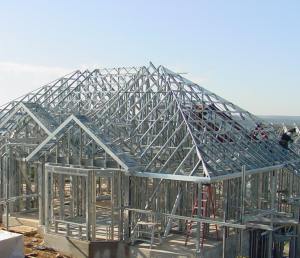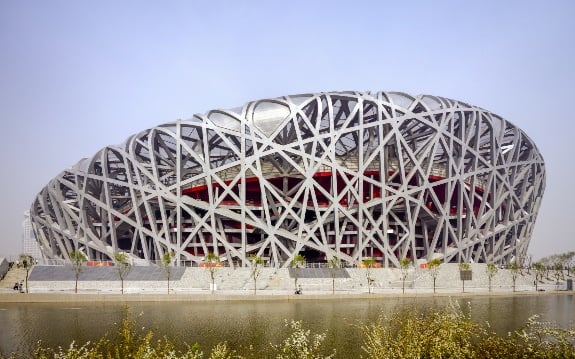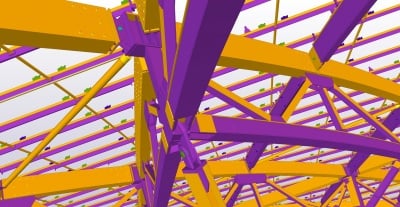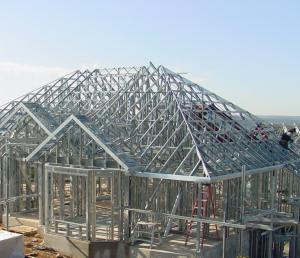
In 1800s, structural steels have started to use in construction industry on account of mass production of steel. Its use continuously increased and became the skeleton of our cities and most constructions. Structural steels immensely have advantages to create higher, bigger and more sustainable, durable, resistant to different natural events, environmental friendly, architectural creative and design freely constructions. It is not appropriate option for every building but the advancements of structural steels made easier to process on steels and widespread use in the industry. For example, modern structures like airports, bridges, stadiums, skyscrapers and portable buildings –by means of lightweight structural steels– are in these areas of utilization. As another indicator of technological development in structural steel, the following example: If the Eiffel Tower was built today, it would be enough to use one-third of the steel.
What are the advantages of using structural steel?
1. 100% recyclable
The world is cognizant of the outstanding properties of steel such as high strength, but not the environmental attributes of structural steel. It is all original green material. Today’s reborn structural steel industry is in fact setting the standard for all green environmentally efficient materials used in the world. All steels, including structural steels, are completely recyclable materials. Steel material has the highest rate in the market with a recycling rate of 98%. It always returns to the steelmaking facilities as scrap steel and it can be reused over and over again with no loss of quality or mass. After multi-recycling, a new fabricated steel can be 93% recycled content. You may be living in a steel building that used to be your washing machine, refrigerator or car scraps.
The latest technologies in steel production promise to significantly reduce carbon emissions. In addition the structural steel production process provides the advantage of superior water resources management and has a 95% water recycling rate. Thus, both the production and use of steel can be very convenient for environmental friendly strategies. With the support of the environmental trend seen in the market, the use of structural steels will increase day by day.
2. Architectural freedom for design processes

The strength and flexible structure of steel contribute architects and engineers a great freedom to design construction and offers broad open spaces without necessitating intermediary columns or weight carriage walls. Due to their small connection points and shapes, structural steels can offer an unlimited number of design options. In addition to this, it is possible to produce steel profiles of the desired dimensions and shapes for completely original structures. If you see an eye-pleasing structure on the outside, it is most likely made using structural steel.

Usually, steel constructions design process has several stages such as idea plan, associated design, architectural analysis and accurate design. This process proceeds as optimization of the components of the structure and designing the support points, load distribution analysis and compliance with customer requirements, finally precise design of all components and their connections.
3. Resistant to different natural events, such as hurricanes, earthquakes
The ability to regulate the distribution of compression and tensile forces in steel structures is one of the major advantages over other structures. It is very easy to take action against specific risks in the region. Being able to regulate the force distribution is vital to be prepared for unexpected loads. In many scenarios, lateral forces can have a devastating effect, and structural steels are well resistant to these forces due to their ductile structure and high modulus of elasticity.
Steel is fire resistant material. This allows ease of design many architectural features and it is allowed to use in areas with high probability of fire. Also, these constructions are completely earthed thus reducing the potential for hidden ignition that cause building fires.
Structural steels are ideal for places that has high winds, frequent storms and tough situations. Due to its ability to twist without fracture, it functions well even in the most severe winds. It also good against to seismic forces, but the critical issue here is that the horizontal forces affect the columns designed to carry vertical loads. This is overcome by steel’s features such as symmetry, twisting strength and stiffness, consistency and structural simplicity which can be all tested in conceptual design stage. The consistency in a plan is achieved by uniform distribution of the structural components.
4. Pre-fabrication
The structural steel parts to be used in construction are pre-manufactured and assembled quickly in the construction site. 70-80% faster than on-site reinforced concrete structures on the grounds that pre-fabricated parts need just bolted connections and supplementary panels. This method makes it possible to operate at very high tolerances and there is virtually no risk of error. Steel structures are produced locally, delivered, quickly installed on the site and reducing local disruption. Also steels for constructions are dry and generally uniform geometry so they are easy to transport.
Pre-fabrication can in fact be a precondition for many of the advantages listed above. The production of steel in thousands of different compositions and properties as needed leads those benefits. The key point of pre-fabricated approaches to the industry is opportunity of growing and scaling businesses in this sector.
Finally, based on the demands of constructions the following sustainability, design freedom, durability, prefabrication and installation are fundamental advantages about structural steels. Today, every steel product has own story, and it would be great to learn about it. Presumably, half of steel that in use now is witness to the history and ancestral objects by means of its green, durable nature.
As a bonus of the transformation of all industries steel uses in engines, automobiles, ships, trains and railways and many machine parts make the steel real backbone speed and development in a lot of ways.
References:
Sustainability
https://www.aisc.org/why-steel/sustainability/
https://www.aisc.org/why-steel/resources/steel-supply-chain/
Design Freedom
https://www.steelconstruction.info/Building_design_using_steel_-_a_summary_for_architects
https://eurocodes.jrc.ec.europa.eu/doc/WS2008/EN1993_6_Mueller.pdf
Durable to Natural Events
https://www.steelconstruction.info/The_case_for_steel
https://constructsteel.org/uploads/files/Steel-Fact-Sheet-Fire.pdf
Fabrication and Installation
http://incubar.net/8-features-that-define-a-prefabricated-steel-building/


